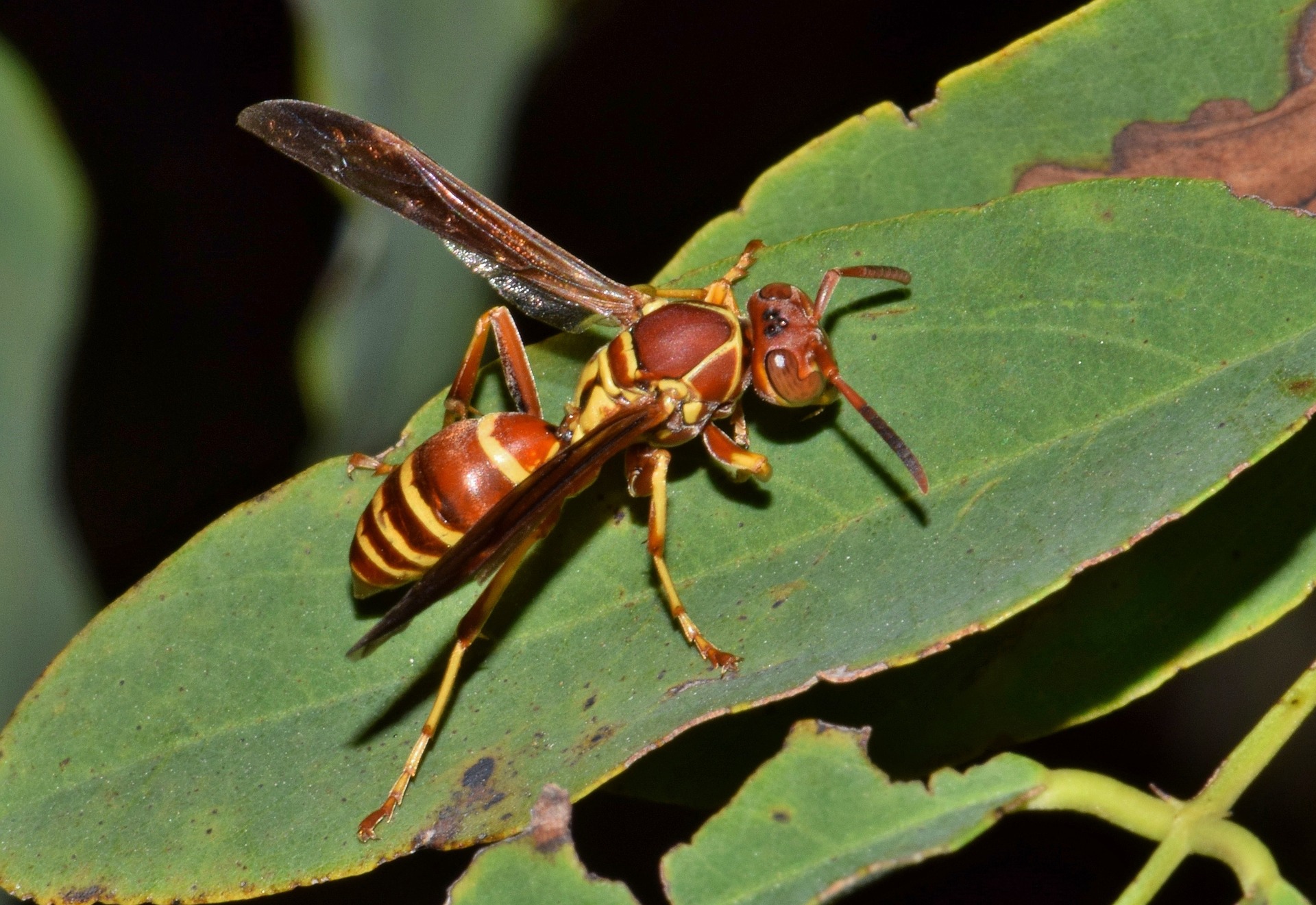The worst place to discover a bug problem is in your own backyard. It doesn’t matter where you live; every place has its well-known pests, and Luzerne County is no exception.
Some local bugs can be annoying, while others can cause millions in damage or carry deadly diseases. The best way to combat these pests is to stay ahead of the game. We’re here to help you discover the top nine local insect problems of Luzerne County and how to control them.
1. Termites
These tiny, social insects live in colonies and feast on wood. Termites are creamy-white, wingless insects that range from ⅛ to ¼ of an inch long. They are not always wingless, however; during mating season, they will swarm and lose their wings shortly after. There are several species of termite, but they all typically live in, on, or around wood. Don’t let their size fool you. These tiny insects can cause up to 5 billion dollars in damage yearly with their massive colonies.
If you happen to spot shredded wings, exoskeletons, or wood damage, you may want to seek out a pest control expert. Termites are difficult to spot and even harder to get rid of depending on the size of the infestation. To stop them from getting in, simply do yearly maintenance on your home, and keep piled wood at least 200 feet from your home.
2. Bed Bugs
Bed bugs are hitchhiking pests. These bloodsuckers search for a host, and once they find one, they hideout until dark to feed. These pests are found anywhere people gather. Usually, they can be picked up during travel when you encounter someone or someplace that has them. Bed bugs are small, ¼ inch bugs that are oval-shaped and flat from top to bottom. Once in your home, they will hide anywhere: cracks, walls, floors, furniture, you name it. They burrow in and make themselves cozy.
Bed bugs are nocturnal; it’s easier for them to feed at night. When they do bite a host, they can leave welts and marks behind. However, if you aren’t looking for it, it can be difficult to tell if you have an infestation. Check any possible hiding spots, bedding, sheets, and your mattress. When you travel, re-pack items in a sealed bag and throw it in the dryer immediately. Bed bugs can also be notorious to get rid of. Depending on the size of your infestation, it may be wise to seek out professional help.
3. Mosquitoes
Small, annoying, and deadly, mosquitoes can be found just about anywhere. They breed in standing water, and females need a blood meal before they lay their eggs. Unfortunately for us, mammals are the blood-meal, and mosquitoes can carry many possible deadly diseases. This insect typically thrives in the warm months around Luzerne County, and they tend to come out at night.
To keep these potentially dangerous pests away from your home, simply clear the area of any standing water. Check for puddles, birdbaths, clogged gutters, or even garden tools; water can pool just about anywhere. Once a mosquito finds a good place, they tend to stick around that area. The key is keeping your property dry.
4. Ticks
Another hitchhiking parasite, ticks are a huge problem in Luzerne County. Coming in a variety of species, these blood-suckers feed on vertebrate animals. Much like mosquitoes, they can transfer some pretty deadly diseases, notably Lyme Disease. Typically, ticks are found in areas with heavy brush or overgrowth like forests, meadows, and fields. They transfer to animals or people by hanging off branches, long grasses, or shrubs.
The main way to avoid this pest is to cover up when hiking or gardening. Additionally, it’s a good idea to use repellents with DEET in them. Keep your yard trim and clean; since ticks thrive in overgrown areas, they will be less likely to find their way into your backyard if you keep the verge trim. Also, tamed foliage will be less of a draw to other animals who may carry ticks as well.
5. Gypsy Moths
Unlike the previous entries, the gypsy moth is not native to Luzerne County. They are an invasive species, and they are especially dangerous to trees and shrubs. While an appetite for greenery may not seem like an issue when in caterpillar form, gypsy moths can eat over 300 plant species. Newly hatched caterpillars are black and hairy, and overtime they turn a mottled yellow-grey and have five pairs of blue dots on their backs. After the become moths, the males are brown, with dark brown marks and they have a 1 ½ inch wingspan. Females, on the other hand, are nearly all white with a dark, saw-toothed pattern on their 2-inch wings.
To get rid of gypsy moths, know the quarantines of your area. If you see any egg masses on your property, often found on trees, lawn furniture, fences, or house siding, you should notify the Federal of State agricultural offices.
6. Cockroaches
Often found in kitchens, basements, and other areas in the home with easy access to a food/water source, cockroaches can be found anywhere. These pests prefer dark, damp areas and they can be found hiding out under sinks, or machines like washers or refrigerators. They may only be about 1 ¼ inches long, but these shiver-inspiring creatures can leave some pretty nasty diseases in their wake, ie, salmonella. The most common cockroach species are Oriental, American, German, and brown-banded.
Like most evasive pests, cockroaches can be tricky to get rid of. The key is to keep your property clean and tidy. Cockroaches can thrive on a small amount of food or water, so the best way to keep them out is to keep up with your property maintenance. Don’t give them a place to feed or hide.
7. Spotted Lanternfly
While it hasn’t officially hit Luzerne County, residents are strongly cautioned against this invasive species which has already made its way to neighboring counties. Much like the Gypsy Moth, Spotted Lanternflies are not native to the area, only these insects go after fruit trees. They feed off the sap and leave gaping wounds, which expose their host trees to other outside dangers. The Spotted Lanternfly starts as an egg sack, and when it hatches, it releases small black nymphs with white spots. As they mature, they turn red, and eventually, they take on a moth-like form with colored and spotted wings.
Much like the gypsy moths, any encounter with these insects must be handled with caution. If you discover the Spotted Lanternfly in any form, contact your federal or state agricultural department for proper disposal methods.
8. Asian Lady Beetle
When winter breaks, these little stowaways come out. The Asian Lady Beetle is an overwintering pest. While they aren’t exactly harmful, they can be incredibly irritating. Though they look like ladybugs, do not be fooled. These bugs bite, and they also leave behind a foul-smelling yellow liquid. These insects are often identified by their yellow, orange, or red shells, that may or may not have black spots. They also have a small “m” on their tiny heads.
Like some of the other entries on this list of Luzerne County pests, the Asian Lady Beetle is an invasive species. However, they are much easier to deal with. You can simply vacuum them up and dispose of them. Be certain to clean out the area you found them; these insects are drawn to their scent. If you want to avoid any revisits, remove all trace of them.
9. Paper Wasp
Less dangerous than a mosquito and more vicious than an Asian Lady Beetle, Paper Wasps can be found nesting around homes or structures. They range from about ¾ of an inch to 1-inch long, and they are often reddish-orange, dark brown, or black in color. Not as aggressive as their yellowjacket or hornet counterparts, the paper wasp will only attack when threatened. Of course, the stings are quite dangerous and painful, especially if you have allergies.
To keep them away, rid your property of standing water and close any areas they may want to make a nest. Since paper wasp stings can be very painful and deadly, it’s recommended you contact a professional to remove the nest.

Concluding Thoughts
The best way to defend your Luzerne County home from potential threats is to know the enemies in your local area. To prevent any possible infestation, luck favors the prepared. If you do find yourself struggling with an infestation, do not hesitate to contact your local pest specialist. Protect your home and your family and keep pests out for good.
[wpforms id=”1017″ title=”true” description=”true”]


